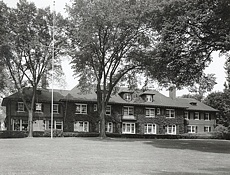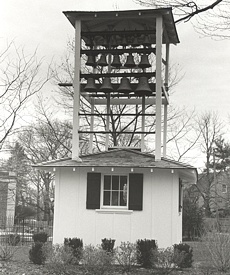Web browser cannot access all needed files. Your gallery may not display correctly.
|
| |
|
The Joy Family "Although the Packard brothers founded the Warren, Ohio-based Packard Motor Company in 1899, it was Henry B. Joy who guided the company to become one of the world’s foremost luxury car manufacturers. A wealthy Detroiter, Henry Joy, in 1902, chanced to see two Packards start instantly and take chase after horse-drawn fire wagons in New York City. So impressed was Joy that he purchased the only Packard for sale in the city. In fact, he liked the car so much that he persuaded nine other Grosse Pointers to invest in the company, taking majority ownership. When the city council of Warren, Ohio prevented Packard from expanding, Joy persuaded company president James Ward Packard to move the company to Detroit. Joy hired a young architect named Albert Kahn to design a new factory to be located on East Grand Boulevard in Detroit. The result was the world’s first reinforced concrete factory. This building was the most modern of its day and served as the model for factories that followed, including Ford’s famous Highland Park plant. James Ward Packard stayed behind in Ohio to run the Packard Electric business, effectively turning the reins over to Joy, who became Packard president in 1909. Joy was a flamboyant, charismatic executive, who in moments of impatience would frequently say, "Let’s do something, even if it’s wrong!" Under Henry Joy’s leadership, Packard began to expand its reputation for technology and luxury. Additionally, Joy guided Packard into innovative motor truck developments, the creation of a V-12 engine, and aviation pursuits, which resulted in the renowned Liberty engine. In 1912, Carl G. Fisher, founder of the Indianapolis Motor Speedway and the first real estate developer of Miami, Florida, proposed an idea so bold that few could believe it: To construct a continuous paved road from New York to San Francisco! He formed the Lincoln Highway Association and recruited Henry B. Joy to be its first president. The idea was not to start building a road in New York and build westward, but rather to enlist the efforts and financing of dozens of cities and towns along the route. The job of recruiting municipal and state participation – and of determining the route itself – rested primarily on the oratory and charisma of Henry B. Joy. The first mile of paved road was constructed west of DeKalb, Illinois in October of 1914. Many more "seedling miles" were built through towns along the 3385-mile route. But the Lincoln Highway, as originally envisioned by Joy was still unfinished when, in 1926, the U.S. Bureau of Public Roads took control of the highway, improved existing sections, filled in the remaining unpaved gaps and promptly renamed it Route 30. A truly courageous American patriot, Joy served in the Spanish American War and at the outset of World War I, he amazingly stepped down as president of Packard to enlist in the Army where he attained the rank of Lieutenant Colonel. Joy continued to serve as chairman of Packard until 1926. His contemporaries in the auto industry, partners and competitors alike, considered Joy to be one of the most brilliant and perceptive minds in the industry. Joy remained active in the industry until his death in 1936." Source: www.automotivehalloffame.org |
"Fair Acres" 301 Lake Shore
Joy Bells now located at the corner of Grosse Pointe Boulevard and Moross, were used by Mrs. Joy to let her husband know that dinner was ready when he was on their yacht. |

